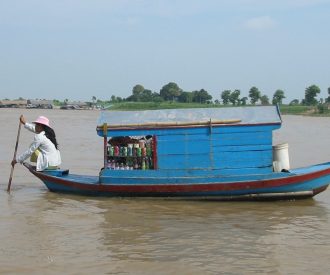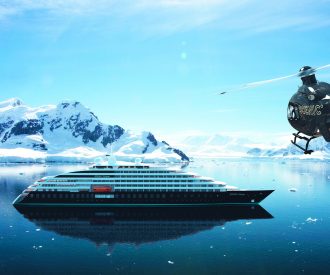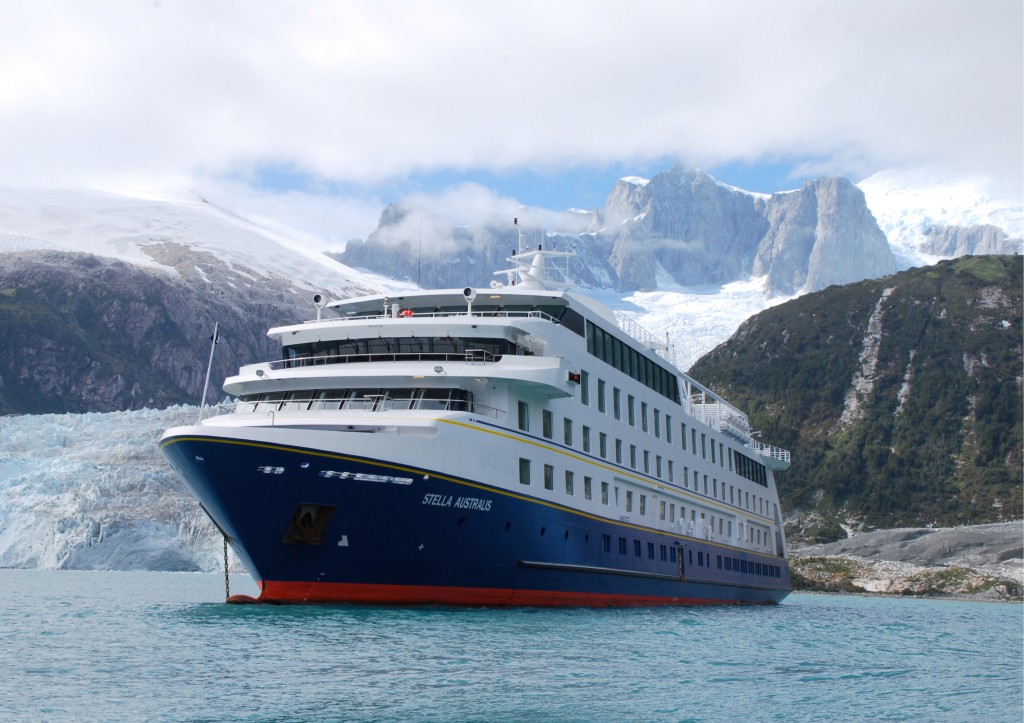
Park near glaciers, WOW! * Photo: Australis
Journey way down south to the remote tip of Patagonia to see some of the most beautifully desolate landscape in the world.
Snapshot: If you really want to get away from it all, but don’t have a ton of time, Chilean cruise line Australis offers short expedition cruises of a week or less to the southernmost regions of Chile and Argentina. They’re ideal voyages for adventure seekers eager to soak up the beautifully rugged and fantastical landscape of this remote corner of the world. The expedition cruise line has been sailing through Patagonia’s southernmost channels for some 25 years, including the Strait of Magellan, Beagle Channel, and the many fjords and waterways of the Tierra del Fuego archipelago, going as far south as the mythical and remote Cape Horn island, one of many small islands “at the end of the world” where the Atlantic and Pacific oceans meet. Weather permitting, a highlight is making landfall for a photo op at the Cape Horn Memorial. Getting all the way down to Tierra del Fuego to start the expedition is a long journey, but for the curious and the intrepid, the trip is more than worthwhile. Penguins and glaciers beckon, and so does the allure of the legendary explorers who paved the way decades and centuries before us, from Ernest Shackleton to Charles Darwin, Sir Francis Drake and Ferdinand Magellan.
Read our STELLA AUSTRALIS feature article by Randy Mink here.
Ship, Year Delivered & Passengers: STELLA AUSTRALIS (built 2010; 210 passengers); a sister ship, VENTUS AUSTRALIS, at the Asenav shipyard in Chile, started operating in January 2018.
Passenger Profile: Generally about 45% of passengers are European, 40% North American and the rest mostly from South America. Announcements are made in English and Spanish, and excursion guides speak both languages with excursions divided into groups accordingly. Depending on the passenger mix, announcements and excursions may also be conducted in a third language, say French, Italian, Portuguese or German. In December there are often more families with children sailing (look for children-sail-free promotions).
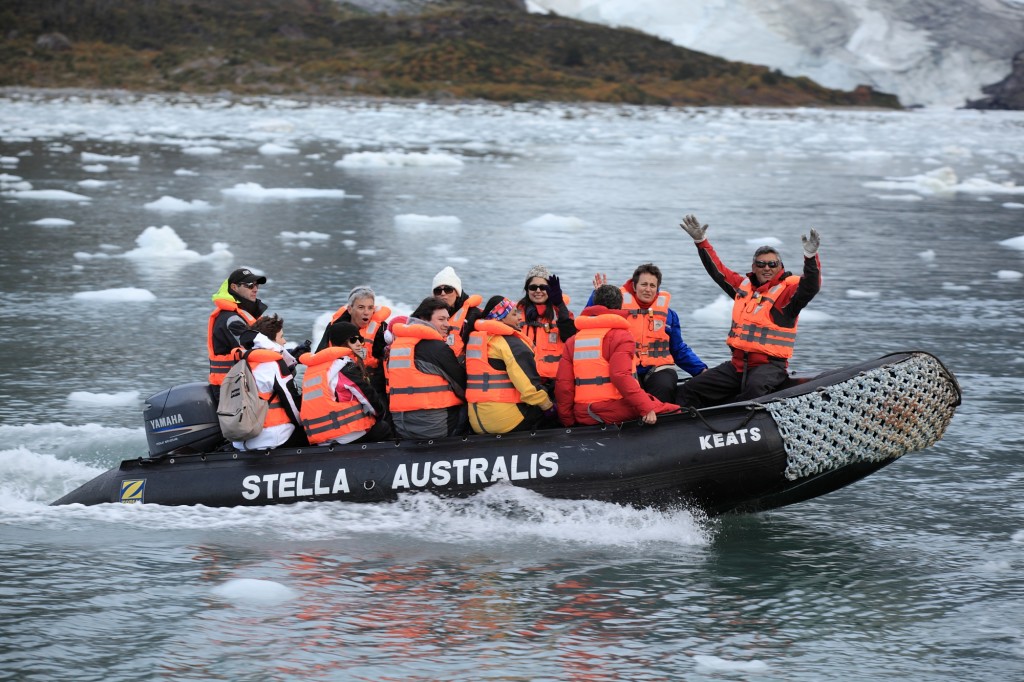
Zipping around on zodiacs is business as usual. * Photo: Australis
Passenger Decks: Five decks and no elevator.
Price: $$ and not a lot of extra charges.
Itineraries: Between September and April choose from 3-, 4- and 7-night cruises. The shorter ones sail between Punta Arenas, Chile, and Ushuaia, Argentina; while the 7-nighters are round-trip from either point (a 5-night option combines 2 days on land from Punta Arenas and a 3-night cruise from Ushuaia back to Punta Arenas). Before or after the cruise, many passengers stay a few days in Ushuaia or take a tour to the gorgeous Torres del Paine National Park or the town of Calafate, gateway to Los Glaciares National Park. To or fro Patagonia, many add on stopovers in Santiago, Chile and/or Buenos Aires, Argentina.
Included features: All meals, soft drinks and alcoholic beverages when barman is on duty, and shore excursions. There is no Wifi or Internet access on board. Suggested tipping is $15 per day per person.
Why Go? To tick Cape Horn off your list and see some fascinating and very desolate territory — fewer people set foot on Cape Horn than in Antarctica. (For some, it’s also a way to see some of what you would see on an Antarctica cruise — penguins and glaciers! — without spending much more time and money to do a full Antarctica cruise; furthermore, some people want to avoid the often very rough seas on the 500-mile journey across the Drake Passage to Antarctica.) N.B. The landing at Cape Horn is subject to favorable weather conditions. In 2017, landings occurred for 70% of the cruises.
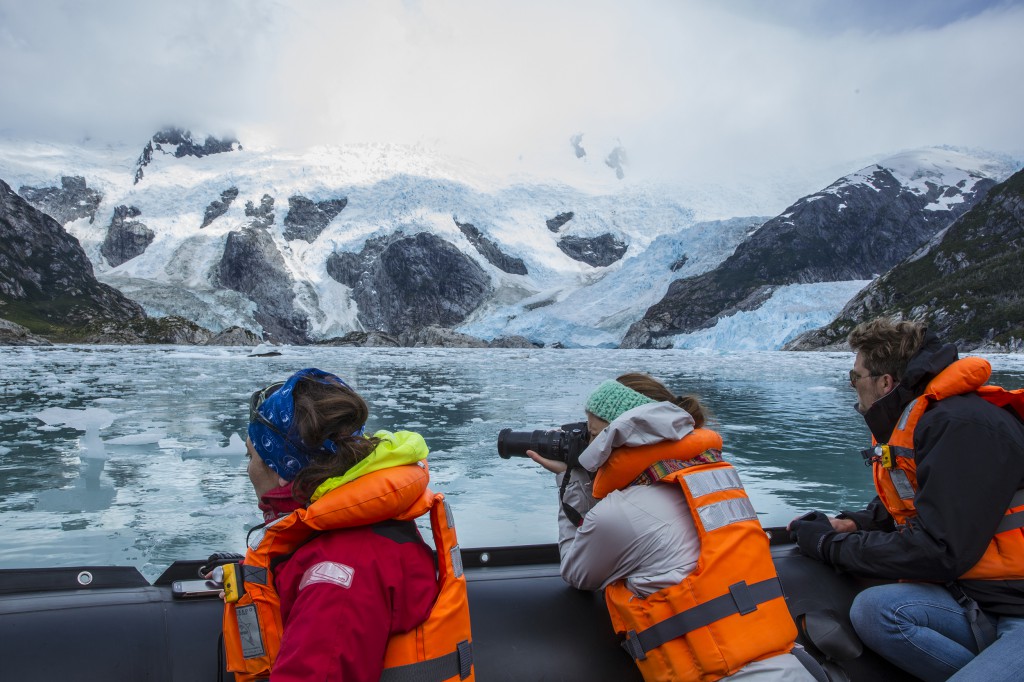
Close up views. * Photo: Australis
When to Go? The summer season in the southern hemisphere is September through April, with the best months weather-wise being January and February. No matter when you go, though, weather can change quickly and you can feel like you’re getting four seasons in one day.
Cabins: All rooms are outside measuring 177 square feet and have large picture windows. Cabins are comfortable but basic, and are configured as doubles or twins, with a chair or two (and no TV). Bathrooms have showers and hairdryers.
Public Rooms: Overall, the ship’s decor is pleasant with nautically inspired blues, beiges and wood tones. The hub is the Darwin Lounge, with a bar and plenty of sofas and chairs with prime views of the passing landscape through floor-to-ceiling windows (everyone can be seated here at one time). Order drinks from the bartender or help yourself to beer and soft drinks from the stocked mini-fridge. There are two other smaller lounges, also with large windows: the aft Sky Lounge with its black-and-white photos of sailboats and models of expedition ships associated with Darwin and Shackleton, and the smaller and cozy forward-facing Yamana Lounge with leather furniture.
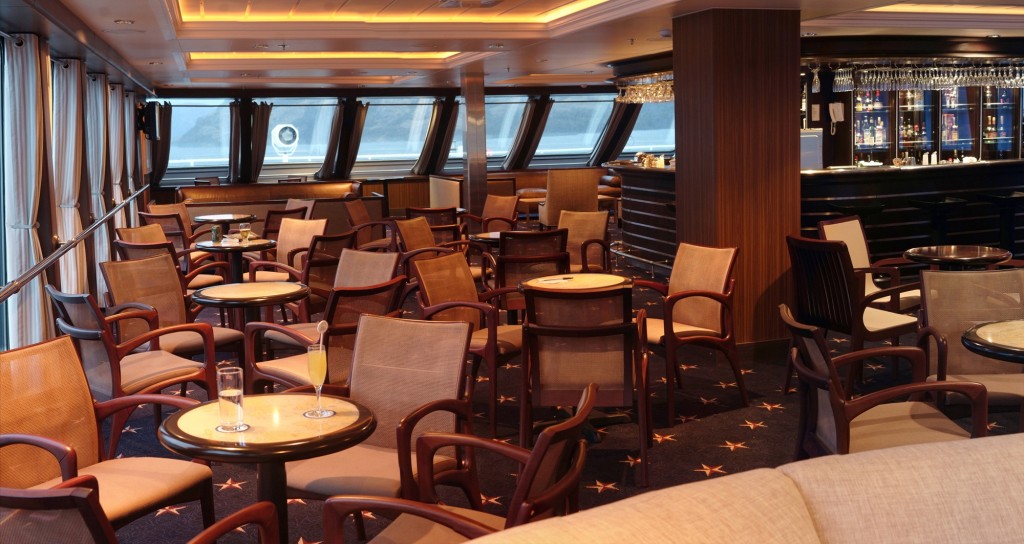
The Darwin Lounge is the ship’s hub. * Photo: Australis
Dining: Eating isn’t the main point on this cruise, though meals are satisfying enough. The dining room has tables for 4 and 6, with windows along both sides. Themed lunch buffets get high marks from most, with a focus cuisines like Japanese, Italian or Patagonian fare (like lamb empanadas and King Crab chowder). Dinner is a la carte from a menu with choices that often include regional favorites, like grilled conger fillet with pastel de choclo, a typical South American sweet corn dish, or entrees like braised lamb with mashed potatoes. A small station in the Sky Lounge offers a selection of tea, coffee, juices and snacks throughout the day.
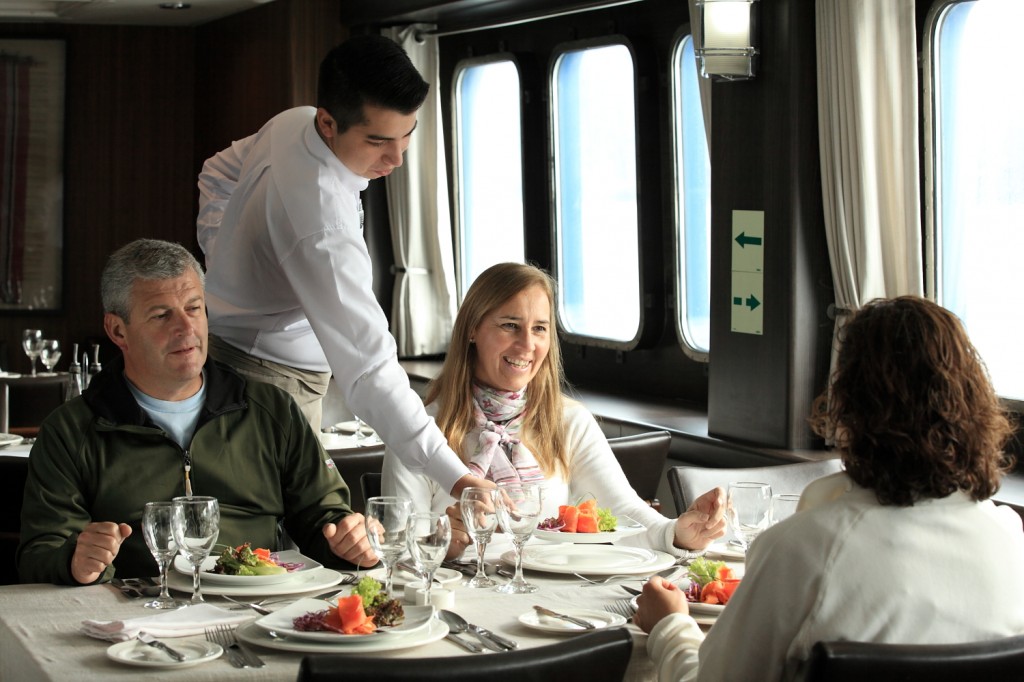
Dining with a view. * Photo: Australis
Activities & Entertainment: By day the show of course is the landscape all around you, with a fleet of 6 inflatable zodiac boats zipping passengers to national parks for onshore treks, remote beaches for penguin spotting, and the edge of glaciers for close-up looks. On board, there’s a GPS chart in all three lounges to track the ship’s course every step of the way. Come evenings enjoy conversation over drinks and dinner, with bingo or karaoke offered for those interested. Talks by the onboard experts about the features, flora and wildlife of the region are a daily event, usually in the morning and/or again before dinner, and at least one relevant documentary shown as well. The 9 to 10 expert expedition guides on each cruise lecture in both Spanish and English; some also speak French, German, Italian and/or Portuguese. There are translator audio headsets for anyone who may need one. For families, there are no special activities for children and none are required, as the daily program is super educational and memorable for adventurers of all ages.
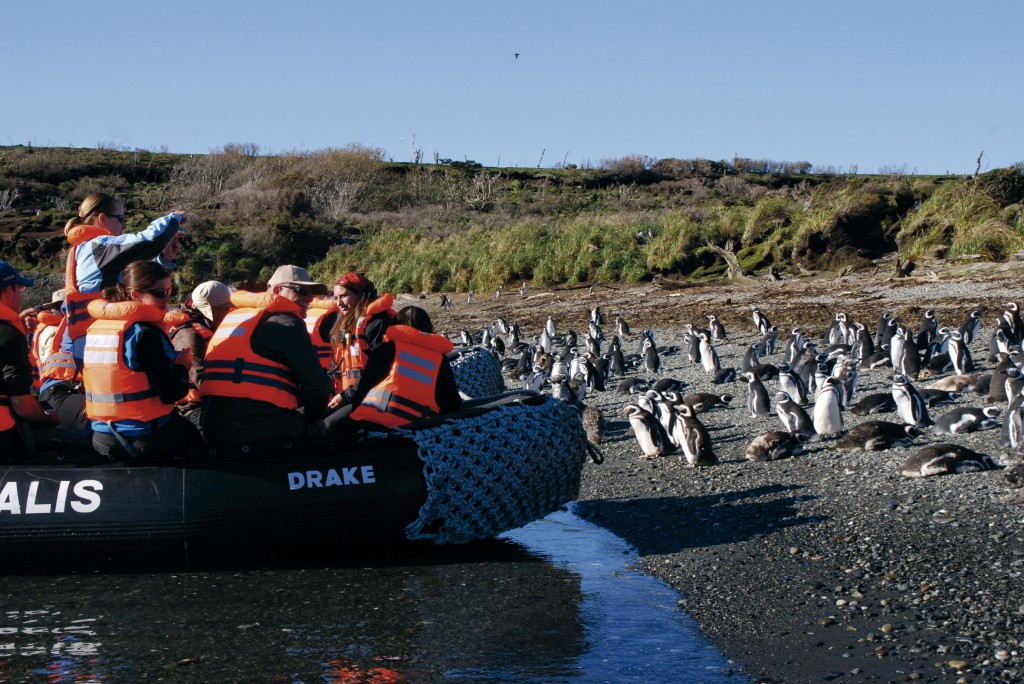
Exploring the Tucker Islets. * Photo: Australis
Along the Same Lines: No one else regularly sails in this region.
Contact: Australis, Ave. El Bosque Norte 0440, 11th floor, Santiago, Chile; www.australis.com lists regional offices as well.

Posted In:



